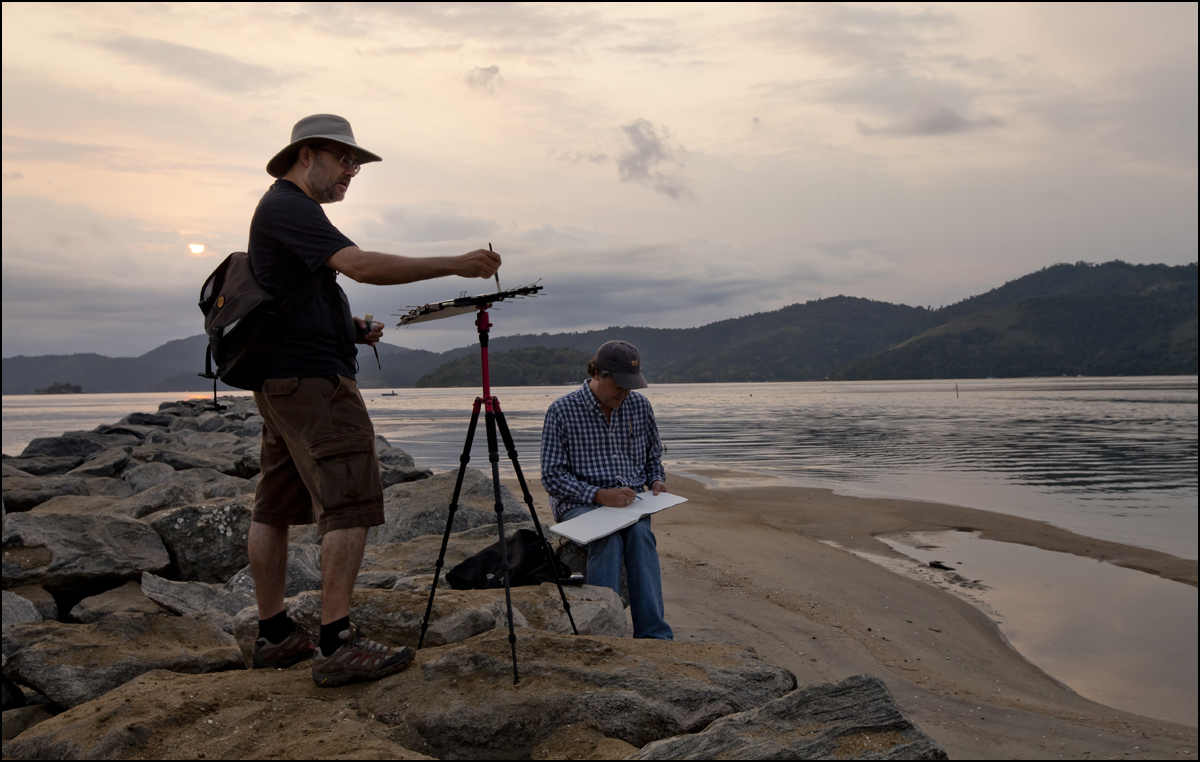
The reason I built this web site was to help inspire and motivate artists all over the world by sharing art, interviews, art spaces, and videos that I believe are inspiring. If this interview with Marc Taro Holmes doesn’t inspire you – nothing will.
Marc Holmes is a prolific artist, blogger and author. He has an active following on his web site Citizen Sketcher. I first stumbled across his art sometime in 2012 on Urban Sketchers, a community that Holmes served as a Board Member and contributor and editor. As a result I featured his work on the gallery in September 2012 with Return of the Tall Ships.
Marc has been very busy on his latest book, which is now available, The Apocalypse Variations. And yet he was gracious enough to find the time to answer all of my questions that I had for him. So, without further ado – here is my interview with Marc Taro Holmes. I do hope you enjoy it.

How did you get started in art and specifically sketching?
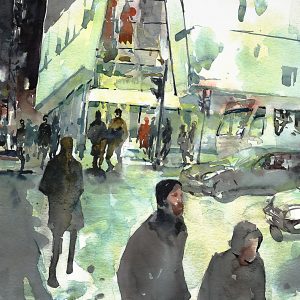
Hey Colin – thanks for getting in touch, and thanks for the questions.
So – I’ve been interested in art since I was a kid – but it started with the sci-fi and fantasy novels I read through my tween-teens. I wanted to be the artist on those book covers! I went to art school, studied illustration and graphic design, and ended up in video games instead of books. I guess that’s a sign of the times.
I was drawing all kind of creatures and characters and imaginary things. But 90% of this work was digital art. It’s challenging work and artists in the entertainment industry are always self-training, taking workshops, doing whatever they can to absorb new skills. Somewhere along the way I discovered Word Wide Sketchcrawl and Urban Sketchers (online drawing groups with offline social clubs) and that turned me onto this path of travel, sketching and observing the world through art.
I discovered – as much as I loved drawing from imagination – I much prefer exploring the world and making art on location. I mean – I’d rather live life right? Experience everything the world has to offer!
When did you start sharing your work online? And, how has blogging and sharing your work impacted your art and career?
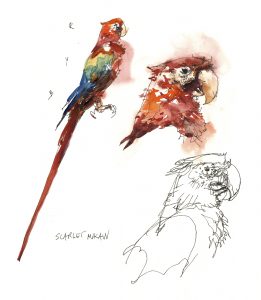
I’m going to say around 2005 I started posting work regularly online?
‘Blogging’ (Blog is a contraction of weB-Log) was created by programmers as a way of broadcasting to a team, or anyone with a similar problem at hand.
I was around a lot of programmers in my game-work. Non-coders obviously love the format as well – and game artists took up blogging like fish to water.
I realized it was perfect for me. Blogging is a combination of personal journal and gym buddy.
It’s a terrific vehicle for organizing your thoughts – but it’s also that guy who stands over your shoulder and pressures you to keep working! To deliver something for the audience. I love that boost to my motivation. It was fuel for the fire to keep learning about art, and keep sharing what I learned.
The blog grew into books about art – my first book – The Urban Sketcher, is a super-nerdy hard-core drawing-tips book – really the ‘best-of’ 5-10 years of learning on the street. The second book, Direct Watercolor covers an overlapping period of travel and painting on location that was completely funded by workshop teaching gigs – thanks to the Urban Sketchers non-profit society and my blog readers! I’ve been very lucky to have the tremendous opportunity to paint in exotic locations all over the world. I’m really amazed and thankful at the readers reception.
From looking at your Workshops and Free Downloads area it is obvious that you care about art education. What drives you to share your techniques and what you’ve learned over the years with others?
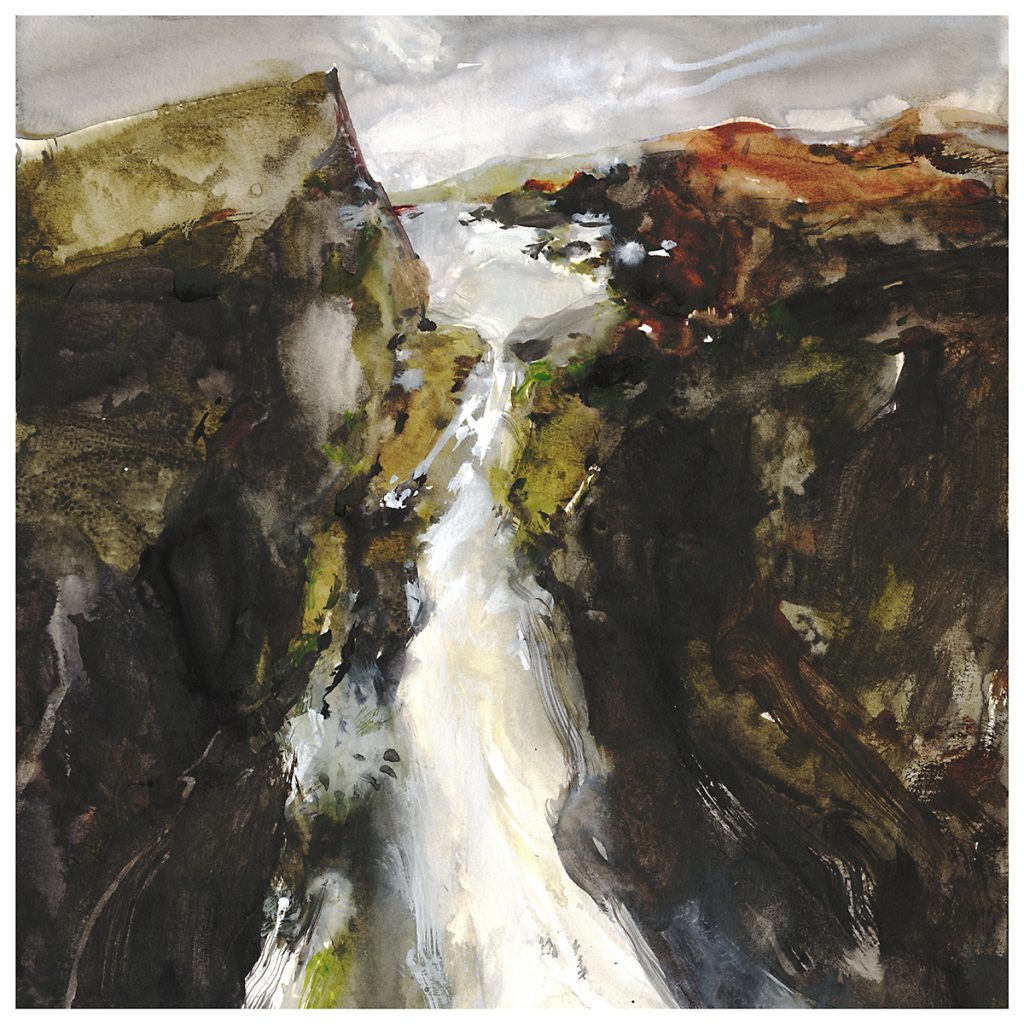
Teaching is the best way to clarify your own thoughts. You have to completely understand your own process before you can teach it to someone else right? So it’s incredibly educational to be a teacher. I know a guy who calls teaching ‘Aggressive Learning’.
It’s super rewarding to hear that someone benefits from one of my self-training experiments.
Isn’t that the best?
You can go out and indulge your obsession with something, and at the same time be helping people with their own journey.
Urban Skechers, as an art-society online, has always had this ‘peer education’ angle. I was involved quite early, and I don’t know if I was molded by that attitude? Probably.
USK is a unique community where we strive to share everything we know – as opposed to the old mentality of scarcity – where artists hoard their knowledge and try represent themselves as a pinnacle of unattainable genius.
I feel like art in our society got off on a wrong track. We don’t look at sport, or music in the same way. Art is often considered ‘inspiration’. or ‘a gift’. We don’t think that way about anything else that involves training your body to perform complex tasks. Dance, Piano, Yoga – a Martial Art – all these things all involve coaching and self-training programs. And competitions. Score-keeping. Practical ways to motivate yourself and improve your abilities.
I’ve always felt art could use more of that kind of thinking. But of course, phrased in a win-win way instead of a winner-take-all.
You have amazing books! Making a book seems like an incredible amount of work. What drove you to write them?
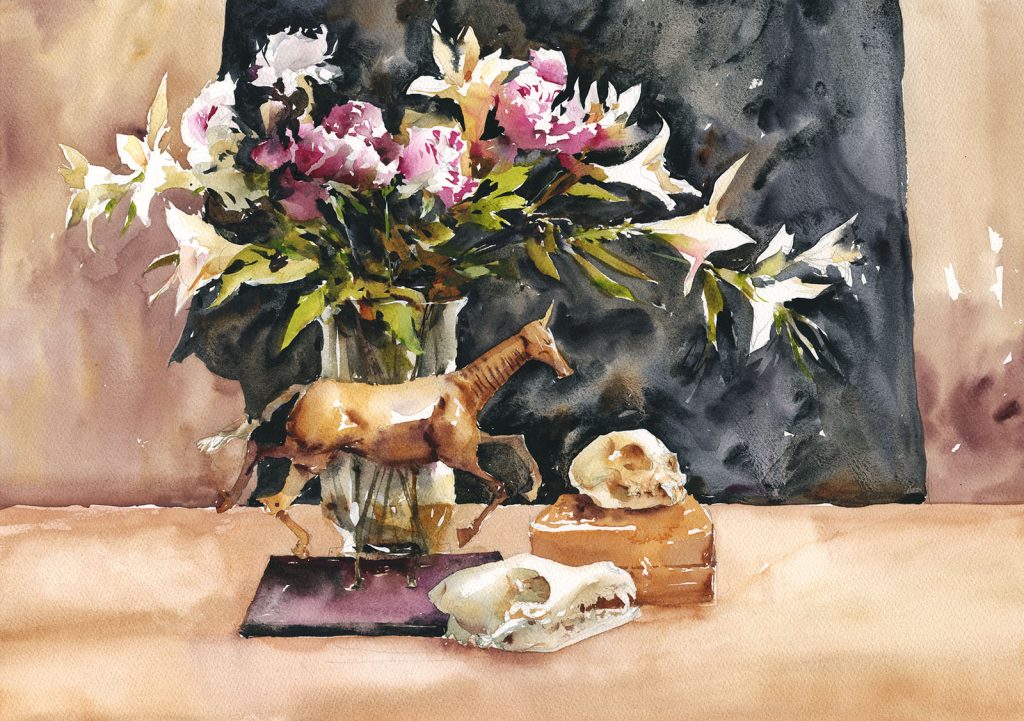
Well, there’s what I said above – that I love the idea of obsessing over my thing, and then throwing that out to the world, so like-minded people can get some of that energy for themselves.
The Urban Sketcher and Direct Watercolor to some extent, were written with a kind of religious-zeal for location drawing. I really just love doing it that much.
Designing Creature and Characters – that is more my personal axe to grind.
There are a LOT of kids who want to get into video game design. I used to hear from them every day.
We call it ‘concept art’ in the biz. This is, in some ways, the top creative job in the field. Concept art is different from 3D modelling or animation – which is what everyone visualizes when they think ‘game art’.
Think of it like the difference between being an architect and being a construction worker. The designer visualizes something that the rest of the team has to physically construct. So you have a responsibility to relay your ideas to the team with clarity. Much like a blueprint. Your drawings have to inform and instruct, as well as inspire. It’s half creative genius, and half industrial designer – or mechanical engineer.
I find a lot of the teaching material about video game design focuses on the flashy bits. The technical aspects of making amazing digital art. Often at the expense of the thinking! Very few places talk about how ideas are generated in the first place.
How is it possible to be imaginative and inventive on a deadline? Day after day? All while receiving blunt criticism from your team and your bosses. Entertainment design is not for the faint of heart.
So I wanted to make a book that tells it like it is, and offers practical solutions for growing this skill – being inventive, being creative. As well – it’s formatted like The Urban Sketcher – more like a classroom-in-a-book. Like – do these things and you will be growing yourself an portfolio of work. You’ll be getting hands-on experience. Wax on, wax off! 🙂
How have your tools or techniques changed from when you started until now?
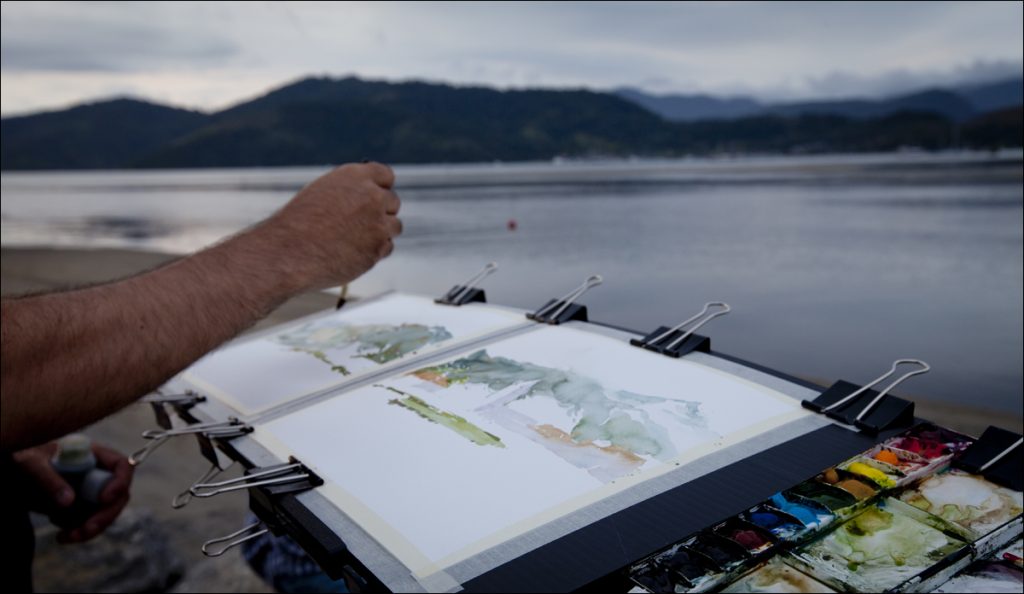
It’s been a process of refinement, and reduction. Every year I use less and less equipment. I still list everything I’ve worked with on my site – so people can follow along and find what tools really speak to them. But for myself – I’ve gradually moved away from drawing tools, and am doing everything with the brush. What I call Direct Watercolor.
This is all about traveling light, moving fast, and getting a lot of sketching in a day. I’m down to the point where I carry one or two pocket brushes, a little tin of paint, two small vials of water, and some taped out paper. That’s it.
The more you bring, the less you create. Because you get tired of hauling that heavy bag full of stuff and you end up going for lunch.
Your work ranges from landscapes to life to urban… you do just about everything. If you had to pick just one subject to paint which would it be and why?
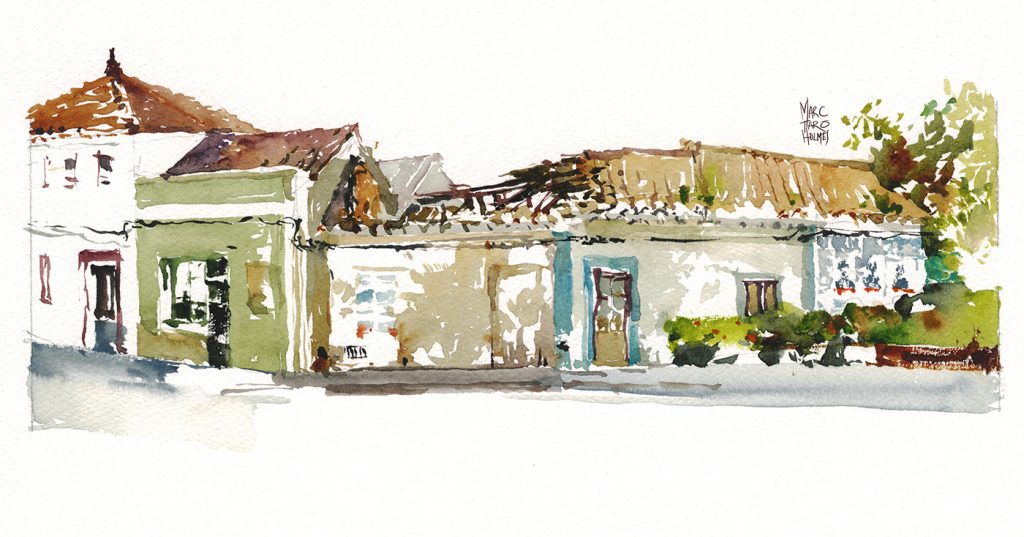
Oh I couldn’t do it.
If I had to pick just one? I’d probably quit instead.
The whole reason I do travel sketching and reportage is to experience new things.
If I had one ‘rule’ – it might be ‘Never draw the same thing twice’.
If you could somehow stick to that, you’d learn so much more about drawing, and you’d have a much more interesting life.
And then also – after so many years of being obsessed with sketching on location? And talking about how location work is the ultimate teacher? My latest book, The Apocalypse Variations: Thirty Paintings in Thirty Days was entirely painted in the studio! It’s a body of work that I couldn’t have made on location – because it uses too much pouring and aggressive handling of large volumes of wet-in-wet.
The only thing that stays the same is change.
Can you share a few of your latest influences? It can be a YouTuber, a classic artist, a friend or colleague, anything.
Hmmm – this is tricky because of everyone I’ll forget!
Sargent and Homer for historical watercolor.
Joseph Zbuckvic. Charles Reid.
I like this guy Benjamin Borklund but I don’t really know anything about him besides what he posts.
But also there are so many contemporary artists I’ve met through Urban Sketchers.
Paul Wang, Kia Kiean, Uma Kelkar. Maru Godas. Mariana Grechanik. Marion Rivolier. Norberto Dorantes. Probably so many more that I’m forgetting.
In comics/Illustration I’m really into Geoff Darrow, Frank Miller, Paul Pope, Katsuya Terada, James Jean.
(Interviewer’s Note: Marc didn’t provide links to these artists. I did some Googling for each one and I wasn’t sure on some of them which links were authentic and not. So I’ve decided not to include the links, even though I always prefer to. So please, please take the time to Google these artists and find them yourself. If I get some links, I’ll update this interview.)
Earning a living off of one’s art can be overwhelming. What would you say to a new artist just starting out to help stay motivated to attain their goals?
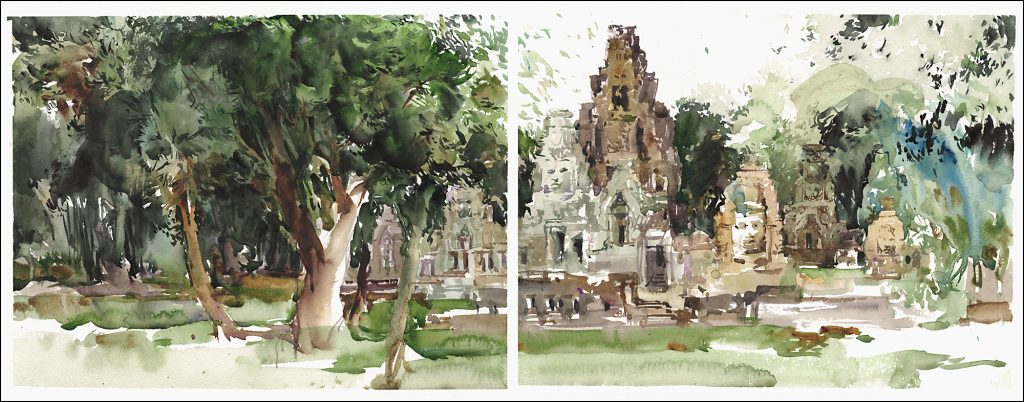
Ok. Let me think here. That’s a huge question.
I think this below is what matters to 99% of us. The 1% who are going to succeed in galleries or museums are a different story. I won’t talk about that because A: I don’t know that world for real and B: if you’re in that world, you don’t need advice.
So – for the rest of us:
Focus on skills first. Invest in yourself. If the work isn’t there, nothing else matters.
Once your work starts getting good, social media is actually quite easy. Don’t struggle to get followers, struggle to get good. Protect your training time like it’s your air supply.
Don’t let fear or embarrassment over your current ability slow you down. Every one starts out terrible. Put in the time and effort and you’ll see rewards. Think of it like weight lifting. You won’t get good at art any faster than you would at weight lifting. And you must lift the weight! You know you won’t gain muscle without effort. Art is more like weight lifting than anything else. Time In = Success Out. That’s it. Nothing else matters.
It’s so simple if you embrace this.
Once you’re good – 5-7 years – then you can think about earning a living.
(You might need to work a day-job somewhere in there hey?)
To live from your art alone – just selling art – you have to add value to people’s lives BEYOND the nice image.
It’s not enough to make beauty, or inspiration, or bring joy. People get that for free from a million sources.
To get paid, you have to add value.
Nobody *needs* art to live. It’s not food or shelter.
I feel, for art, that comes down to three things: Teaching, Entertainment, or Memorializing.
Teaching – that’s clear right – what the value to your customer is. This is the bread-and-butter for most artists today. Being an artist can be like being a yoga teacher or a personal trainer. You can make your living helping others.
Entertainment – that’s the stuff of life today. I feel like, our entire culture is entertainment media. So for the artist – make fan-art, make comics, games, art-books – anything you can offer to the world that stimulates their mind, that lightens their day, that feeds thier media-fetishes. You are competing with Netflix and video games for people’s mental energy.
Memorializing – by this I mean, making tangible memories of people’s lives. Paint portraits – be it people, pets, boats, horses or homes. Or what I have done to some degree – the streets of their home town. These are the kind of things people value enough to put money into your hand. It’s about them, not you.
I personally don’t do much of this work – but I recognize it’s a way to live.
Without one of those aspects of tangible value in your work – you won’t make a living. I don’t think. Sorry.
And you know – it’s perfectly fine not to live from your art. Some of the greatest artists and writers in history have been office clerks or postal workers. You need to protect your art-making any way you can. Selling it is, in a way, opening yourself to distraction. Think about if you even want to sell art! Is your goal to spend more time making your own art? or making art for other people? Is it better to do LESS art, but MORE personal work?
Either way – best of luck! Take care and have fun 🙂
—
This was an amazing and inspiring artist interview. I hope your agree and I hope you’re as motivated as I am to work on your craft – whatever it may be.
You can find everything about Marc on his web site including his books, his art, his social media links, and more. So do visit The Citizen Sketcher.
